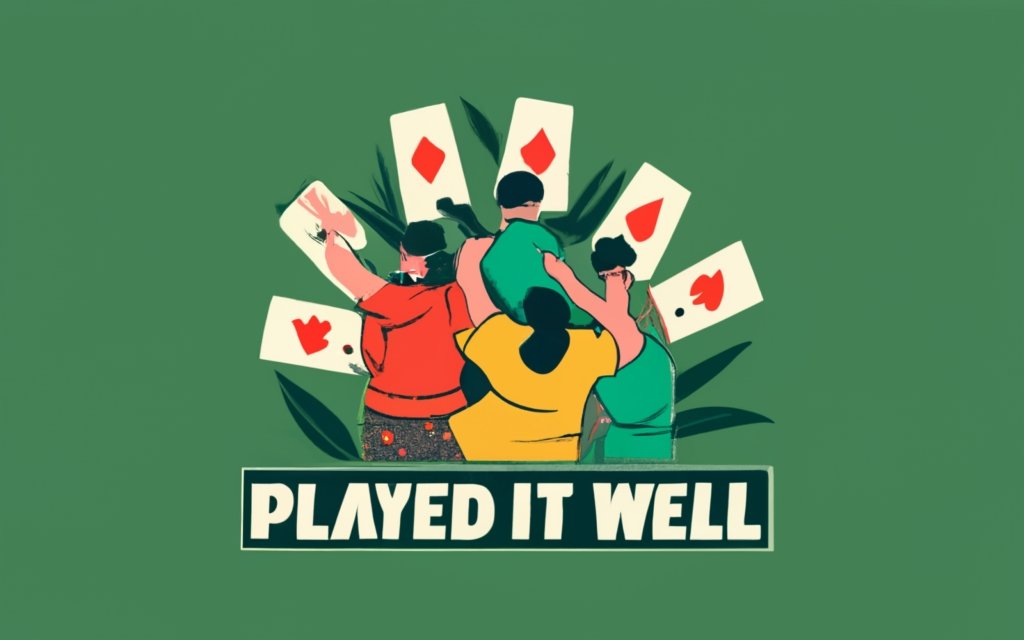Picture this: a dark and crumbling cityscape, where towering skyscrapers cast long shadows over deserted streets. Crime and corruption run rampant, and the only hope for survival lies in your ability to outsmart and outmaneuver your opponents. This is the world of dystopian urban escape, a thrilling new board game that immerses you in a bleak future where every move could mean life or death. As you navigate through the intricately designed game board, you’ll encounter treacherous obstacles, cunning adversaries, and harrowing challenges that will put your strategic thinking to the test. Get ready to embark on a dystopian adventure unlike any other, where the fate of your character and the unraveling of an enthralling storyline rest squarely in your hands.
1. Dystopian Urban Escape
1.1 Exploring the concept of dystopia
Dystopia is a fascinating concept that captures our imagination, painting a picture of a future world filled with despair, oppression, and chaos. It serves as a warning of what our society could become if we’re not careful. Dystopian settings are often characterized by totalitarian governments, environmental disasters, or widespread social unrest. They create a sense of unease and intrigue, drawing us into a world that is both terrifying and captivating.
1.2 The allure of an urban escape
Amidst the gritty and often overwhelming nature of a dystopian urban setting, the allure of escape becomes incredibly enticing. Board games set in dystopian worlds offer an opportunity to explore these environments in a controlled and immersive way, allowing players to navigate through the chaos and experience the thrill of survival. They provide a chance to challenge yourself, strategize, and overcome the obstacles that an oppressive society presents.
2. Dystopian Board Games
2.1 Rise in popularity
In recent years, there has been a significant rise in the popularity of dystopian-themed board games. This trend can be attributed to the growing fascination with dystopian narratives in popular culture. Board games offer a unique medium to dive deeper into these worlds, allowing players to actively participate and shape the outcome of their own stories. It’s a form of entertainment that goes beyond simply consuming media and instead invites players to actively engage with the dystopian setting.
2.2 Unique gaming experience
Dystopian board games provide a unique gaming experience that sets them apart from traditional board games. They often incorporate elements of strategy, resource management, and cooperative gameplay. Players are faced with difficult decisions, balancing the need for survival with the desire to change the oppressive regime. This fusion of storytelling and gameplay not only makes for an engaging experience but also allows players to feel a sense of agency in a world that may seem hopeless.
2.3 Engaging storytelling
One of the key aspects that makes dystopian board games so compelling is the engaging storytelling they offer. These games often come with rich narratives that explore the intricacies of the dystopian society, unraveling mysteries and presenting moral dilemmas along the way. Through immersive storytelling, players are able to connect with the characters and the world they inhabit, fostering an emotional investment that adds depth to the overall gaming experience.

This image is property of images.unsplash.com.
3. Creating the Dystopian Setting
3.1 Post-apocalyptic landscapes
Post-apocalyptic landscapes are a common backdrop for dystopian board games. The remnants of a once-thriving civilization now lay in ruins, overgrown with vegetation reclaiming its territory. Players navigate through crumbling buildings and decaying streets, constantly encountering reminders of the society that was lost. This desolate setting serves as a constant reminder of the challenges they face and the urgency of their mission.
3.2 Futuristic cityscapes
On the opposite end of the spectrum are dystopian board games set in futuristic cityscapes. These games depict sprawling metropolises dominated by towering skyscrapers and illuminated by neon lights. The streets are crowded with people, and oppressive government surveillance is everywhere. This setting presents a different kind of challenge, where players must navigate the complex social hierarchy and find ways to challenge the authority from within.
4. Gameplay Mechanics
4.1 Resource management
Resource management is a fundamental gameplay mechanic in dystopian board games. Players must make strategic choices on how to allocate limited resources such as food, water, and ammunition. Every decision carries weight, as the consequences of mismanaging resources can be dire. The constant struggle for survival adds a layer of tension to the gameplay, forcing players to think strategically and prioritize their actions.
4.2 Survival challenges
Survival challenges are another integral part of dystopian board games. Players often face a wide range of obstacles, from escaped creatures of genetic experiments to hostile factions vying for control. Overcoming these challenges requires careful planning, teamwork, and sometimes a little luck. The ever-present threat of danger serves as a constant reminder of the harsh realities of the dystopian world and heightens the sense of urgency.
4.3 Role-playing elements
Dystopian board games often incorporate role-playing elements that allow players to develop their characters and shape their individual stories. Players can make choices that reflect their moral compass, influencing not only the story but also the outcome of their journey. This personalization adds depth to the gameplay, creating a sense of investment in the characters and their path in the dystopian world.

This image is property of images.unsplash.com.
5. Character Development and Customization
5.1 Unique abilities and traits
Character development and customization play a crucial role in dystopian board games. Players are given the opportunity to create unique characters with their own abilities and traits. These abilities can range from increased strength or agility to specialized skills such as hacking or negotiation. The diverse range of options allows players to approach challenges in different ways and encourages replayability as they explore various character builds.
5.2 Skill trees and progression
To further enhance character development, many dystopian board games incorporate skill trees and progression systems. These mechanics allow players to unlock new abilities or improve existing ones as they progress through the game. This sense of progression provides a satisfying sense of growth and makes each playthrough feel unique. It also adds an element of strategy as players must carefully choose which skills to prioritize, considering both their personal playstyle and the challenges they face.
6. Ethical Dilemmas and Moral Choices
6.1 Tackling ethical issues
A hallmark of dystopian board games is their exploration of ethical issues and moral dilemmas. Players are often faced with difficult choices, each with its own consequences. These choices may involve sacrificing personal safety for the greater good or choosing to protect loved ones at the expense of the larger society. By presenting players with these thought-provoking scenarios, dystopian board games encourage introspection and spark discussions about morality and ethics.
6.2 Impact on gameplay and outcomes
The moral choices players make in dystopian board games have a tangible impact on gameplay and outcomes. These choices can alter the trajectory of the story, unlocking new paths, and branching narrative arcs. The consequences of moral choices are not always clear-cut, and players must navigate the gray areas of the dystopian world. This level of agency and the ability to shape the outcome creates a sense of immersion and investment in the game world.

This image is property of images.unsplash.com.
7. Fostering Collaboration and Competition
7.1 Cooperative gameplay
Many dystopian board games foster collaboration among players, encouraging teamwork and cooperation to overcome the challenges presented by the oppressive regime. Players must work together, sharing resources, and coordinating strategies to maximize their chances of survival. This cooperative gameplay not only strengthens the bond between players but also mirrors the theme of unity in the face of adversity that often permeates dystopian narratives.
7.2 PvP elements and rivalries
While cooperation is a common theme in dystopian board games, some games also incorporate player versus player (PvP) elements to introduce a competitive aspect. These PvP elements can range from rival factions competing for control to individual players vying for limited resources. They add an extra layer of tension and unpredictability to the gameplay, forcing players to not only contend with the oppressive regime but also with each other.
8. Immersive Storytelling
8.1 Deep narratives
Immersive storytelling is at the heart of dystopian board games. These games often feature deep narratives that unfold gradually as players progress through the game. The stories are filled with compelling characters, complex relationships, and unexpected plot twists. The immersive nature of these narratives draws players into the world, allowing them to emotionally connect with the characters and their struggles.
8.2 Multiple story arcs and endings
Dystopian board games frequently incorporate multiple story arcs and endings, offering players a high degree of replayability. The choices players make throughout the game can lead to different outcomes, allowing them to explore various paths and experience different endings. This non-linear storytelling adds depth and complexity to the game, ensuring that players’ decisions have real consequences and significantly impact the overall narrative.

9. Exploring Survival and Resource Scarcity
9.1 Limited resources
Survival and resource scarcity are central themes in dystopian board games. Players must contend with limited supplies, constantly searching for food, water, and other essentials. Every decision made in relation to resource management carries weight, as running out of essential supplies could have dire consequences for the characters’ survival. This sense of scarcity adds a sense of urgency and realism to the gameplay, reflecting the harsh realities of a dystopian world.
9.2 Strategic decision-making
Navigating the limited resources in a dystopian board game requires strategic decision-making. Players must carefully plan their actions, making choices that maximize the utilization of available resources while minimizing waste. Balancing short-term needs with long-term sustainability becomes a critical aspect of gameplay, forcing players to think several steps ahead and adapt their strategies to the ever-changing conditions of the dystopian world.
10. Dystopian RPG Elements in Board Games
10.1 Character progression and leveling
Dystopian board games often incorporate role-playing game (RPG) elements, allowing players to level up their characters and progress through the game. As players explore the dystopian world, they earn experience points that can be used to unlock new abilities or improve existing ones. This character progression provides a sense of achievement and growth, making each playthrough feel rewarding and encouraging players to continue exploring the rich narratives and challenging gameplay.
10.2 Side quests and exploration
To enhance the sense of immersion and provide additional content, dystopian board games often feature side quests and opportunities for exploration. These side quests may uncover additional stories, provide valuable resources, or offer new challenges. By engaging in these optional activities, players can further deepen their understanding of the dystopian world and uncover hidden secrets, adding depth and replayability to the overall gaming experience.
10.3 Branching narratives
Branching narratives are a key element of dystopian RPG board games. Players’ choices and actions throughout the game can spawn a wide variety of outcomes, leading to branching storylines. These multi-faceted narratives ensure that no two playthroughs are the same, offering unique experiences and allowing players to shape the story according to their decisions. The branching narratives elevate the replayability of dystopian board games, enticing players to explore different paths and uncover the multiple layers of the game world.
In conclusion, dystopian-themed board games offer an intriguing and immersive experience that combines elements of storytelling, strategic gameplay, and ethical dilemmas. The rise in popularity of these games can be attributed to their unique ability to transport players into a dystopian world, allowing them to explore post-apocalyptic landscapes or futuristic cityscapes while making difficult choices and overcoming survival challenges. With engaging narratives, character development and customization, collaborative or competitive gameplay, and RPG elements, dystopian board games provide endless opportunities for players to escape into a captivating and thought-provoking dystopian urban escape.






